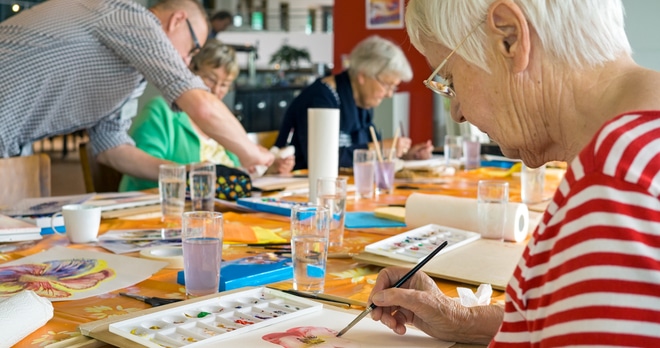Physical therapy for stroke patients are an essential part to recovery that addresses a large breadth of ailments that people face after experiencing a stroke. While physical therapy addresses a large range of things for patients, supplemental therapy to improve physical function, increase quality of life, and decrease depression significantly helps patients on their road to recovery, and creative art therapy has been cited as a great option for patients to engage in post stroke.
Creative art therapy is focused on allowing patients to communicate their feelings through artistic mediums such as body language, speech, pictures, language, and symbols. Through visual art, drama, or dance, healing and be attained and individuals who have survived a stroke can gain the skills to confront loss and explore new approaches to living that will enhance their quality of life. The benefits to one’s psychological state also extends to benefits in physical states as the opportunity to relearn motor skills during engagement in creative art therapy presents itself there too.
“Art therapy is said to stimulate the brain allowing past memories to resurface, cognitive ability to develop and new memories to form.”
By allowing individuals to concentrate their thoughts and energy into something such as visual art, they are able to produce expressions in order to convey and explore underlying feelings that are often difficult to express or understand. The fine motor skills needed for this medium also helps in the retraining and promotion of neuroplasticity in patients as well.
In addition to visual arts, drama as well as dance and movement therapy prove to be extremely beneficial to stroke patients. “…aerobic exercise contributes to a specific protein; brain derived neurotropic function (BDNF) which is involved in brain re-organisation and re-learning.”
Analysis
Since the Neurolife sleeve is so based in science and technology in its endeavor to better the stroke rehabilitation process and the experience of stroke survivors through that lens, the perspective of arts and humanities will promote and fill out any gaps that the technology might miss.
Rather than curated and monotonous exercises being done with the sleeve, perhaps the integration of dance or an outlet for creative expression would prove insightful to use in conjunction with the sleeve itself.
This article showcased an interesting aspect of stroke recovery from a psychological standpoint as compared to my other art article that I explored. The ability to allow patients to express and understand their feelings about their condition is something that neither the sleeve or any technology would afford the patient to do in its current state. Potentially a user scenario in which dance or drama can be the focus of a guided therapy session to allow the patient to record and process with themselves or a medical professional would help to address psychological conditions such as depression or anxiety that they are facing.




